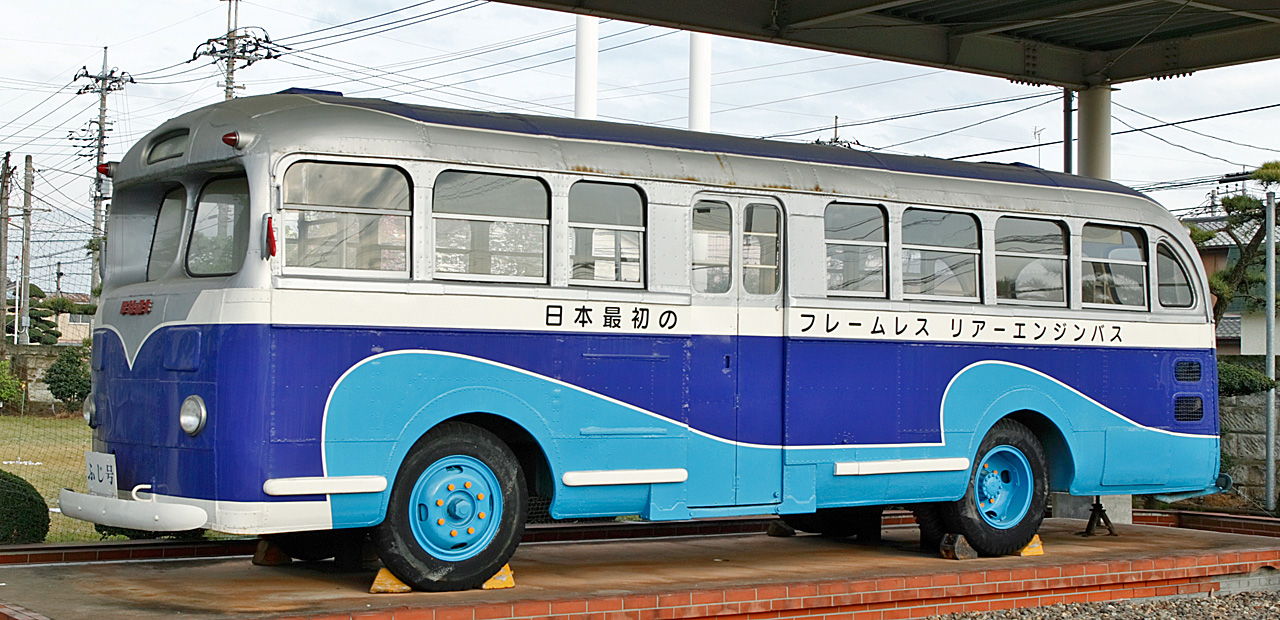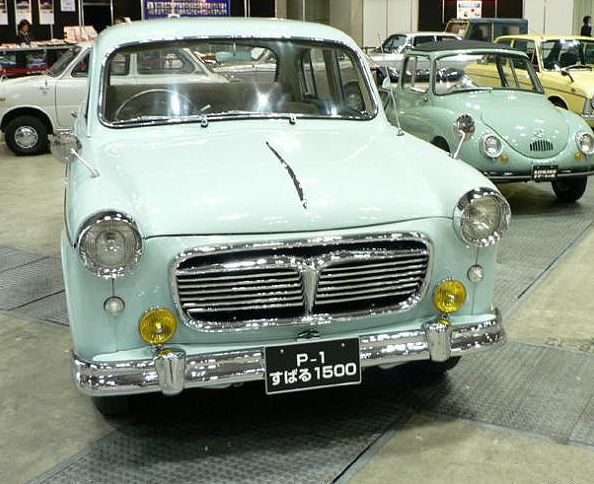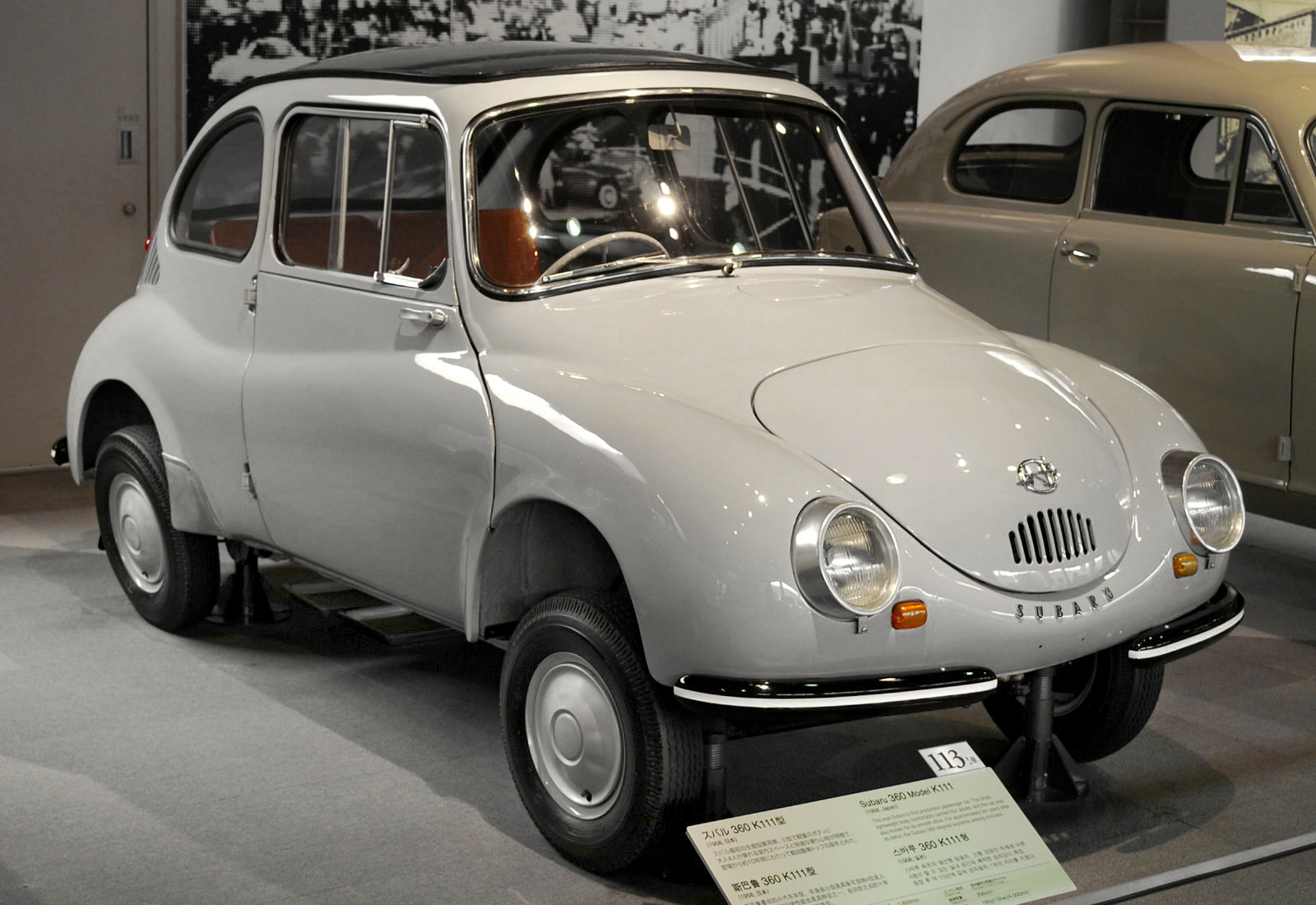Shinroku Momose on:
[Wikipedia]
[Google]
[Amazon]
was a Japanese aircraft/automotive engineer.
He is famous for the development of the
 * January 1951 – Assigned to design the
* January 1951 – Assigned to design the  * December 1955 – Production of Subaru 1500 was cancelled and Momose was assigned to design the
* December 1955 – Production of Subaru 1500 was cancelled and Momose was assigned to design the  * October 1960 – Assigned as the senior engineering manager, Gunma Workshop ( Ota City), Fuji Heavy Industries
* February 1961 – The first generation
* October 1960 – Assigned as the senior engineering manager, Gunma Workshop ( Ota City), Fuji Heavy Industries
* February 1961 – The first generation  * October 21, 1965 – Subaru 1000 was shown to the press at the Tokyo Hilton Hotel (where
* October 21, 1965 – Subaru 1000 was shown to the press at the Tokyo Hilton Hotel (where  * October 1966 – Promoted to the engineering director, Fuji Heavy Industries
* May 1967 – Promoted to a board member of Fuji Heavy Industries
* August 1968 – Assigned as the executive officer of the Subaru Engineering Division
* June 1975 – Assigned as the executive officer of the Subaru Service Division
* June 1983 – Assigned as a statutory auditor, Fuji Heavy Industries
* 1987 - Awarded to the Technology Contribution Prize by the
* October 1966 – Promoted to the engineering director, Fuji Heavy Industries
* May 1967 – Promoted to a board member of Fuji Heavy Industries
* August 1968 – Assigned as the executive officer of the Subaru Engineering Division
* June 1975 – Assigned as the executive officer of the Subaru Service Division
* June 1983 – Assigned as a statutory auditor, Fuji Heavy Industries
* 1987 - Awarded to the Technology Contribution Prize by the
Shinroku Momose History and Biography
Japan Automotive Hall of Fame Official Website (Japanese)
In the Mind of Subaru 1000 Development Engineers
Source: “Subaru” magazine – Subaru 1000 extra edition (issued May 20, 1966) (Japanese) {{DEFAULTSORT:Momose, Shinroku 1919 births 1997 deaths Japanese aerospace engineers Japanese automotive engineers Subaru Imperial Japanese Navy personnel of World War II Imperial Japanese Navy officers People from Nagano Prefecture University of Tokyo alumni Japanese business executives Corporate executives in the automobile industry
He is famous for the development of the
Subaru 360
The Subaru 360 is a rear-engined, two-door city car manufactured and marketed from 1958 to 1971 by Subaru. As the company's first automobile, production reached 392,000 over its 12-year model run.
Noted for its small overall size, 1,000 lb ...
, the Subaru Sambar
The Subaru Sambar is a cabover truck and microvan manufactured and marketed by Subaru as Japan's first truck compliant with the country's strict Keitora (軽トラ) or ''Kei'' vehicle tax class. Introduced in 1961 in microvan and Kei pickup co ...
and the Subaru 1000 series.
History
* February 20, 1919 – Born in Shiojiri, Nagano Prefecture as the second son of aSake
Sake, also spelled saké ( ; also referred to as Japanese rice wine), is an alcoholic beverage of Japanese origin made by fermenting rice that has been polished to remove the bran. Despite the name ''Japanese rice wine'', sake, and indee ...
brewer.
* April 1939 – Entered the Department of Aeronautics, Tokyo Imperial University
, abbreviated as or UTokyo, is a public research university located in Bunkyō, Tokyo, Japan. Established in 1877, the university was the first Imperial University and is currently a Top Type university of the Top Global University Project by ...
(Majored in engine)
* January 1942 – Joined Nakajima Aircraft Company
The was a prominent Japanese aircraft manufacturer and aviation engine manufacturer throughout World War II. It continues as the car and aircraft manufacturer Subaru.
History
The Nakajima Aircraft company was Japan's first aircraft manufactur ...
. He was enlisted as an Ensign
An ensign is the national flag flown on a vessel to indicate nationality. The ensign is the largest flag, generally flown at the stern (rear) of the ship while in port. The naval ensign (also known as war ensign), used on warships, may be diffe ...
by the Imperial Japanese Navy
The Imperial Japanese Navy (IJN; Kyūjitai: Shinjitai: ' 'Navy of the Greater Japanese Empire', or ''Nippon Kaigun'', 'Japanese Navy') was the navy of the Empire of Japan from 1868 to 1945, when it was dissolved following Japan's surrend ...
twenty days after he joined Nakajima. He was attached to the Yokosuka Naval Air Technical Arsenal
had many names, each depending on the period of its existence, and the circumstances at that time. Many of the names were acronyms that were derived from its military name or designation, which changed from time to time. The arsenal was sometim ...
("Kugisho") and assigned to explore jet engine and gas turbine
A gas turbine, also called a combustion turbine, is a type of continuous flow internal combustion engine. The main parts common to all gas turbine engines form the power-producing part (known as the gas generator or core) and are, in the directio ...
.
* 1944 – As a Naval officer, he was sent back to his home company Nakajima to examine the installation of turbocharger
In an internal combustion engine, a turbocharger (often called a turbo) is a forced induction device that is powered by the flow of exhaust gases. It uses this energy to compress the intake gas, forcing more air into the engine in order to pro ...
to the Nakajima Homare
The Nakajima Homare (誉, "praise" or, more usually, "honour") was an air-cooled twin-row 18 cylinder radial Japanese aircraft engine manufactured during World War II.
Producing almost 2,000 horsepower, it was used widely by both the Imperial ...
engine of the Nakajima C6N
The Nakajima C6N ''Saiun'' (彩雲, "Iridescent Cloud") was a carrier-based reconnaissance aircraft used by the Imperial Japanese Navy Air Service in World War II. Advanced for its time, it was the fastest carrier-based aircraft put into servi ...
* August 15, 1945 – Around ten design staff including Momose remained at Koizumi Plant of Nakajima Aircraft Company.
* 1949 – Designed and launched the monocoque
Monocoque ( ), also called structural skin, is a structural system in which loads are supported by an object's external skin, in a manner similar to an egg shell. The word ''monocoque'' is a French term for "single shell".
First used for boats, ...
rear-engine bus Fuji TR014X-2.
Subaru 1500
The Subaru 1500 is the first car built by Fuji Heavy Industries, with the development code-name of P1. The prototype used a monocoque body structure and adopting the " ponton" style appearance, with an independent front wishbone suspension and a ...
(project number "P-1").
* February 1954 – Initial model of the Subaru 1500 was completed.
 * December 1955 – Production of Subaru 1500 was cancelled and Momose was assigned to design the
* December 1955 – Production of Subaru 1500 was cancelled and Momose was assigned to design the Subaru 360
The Subaru 360 is a rear-engined, two-door city car manufactured and marketed from 1958 to 1971 by Subaru. As the company's first automobile, production reached 392,000 over its 12-year model run.
Noted for its small overall size, 1,000 lb ...
at the same time.
* November 1957 – Assigned as the senior engineering manager, Isesaki Plant, Fuji Heavy Industries
is a Japanese multinational corporation and conglomerate primarily involved in both terrestrial and aerospace transportation manufacturing. It is best known for its line of Subaru automobiles. Founded in 1953, the company was formerly named ( ...
* March 3, 1958 – Subaru 360
The Subaru 360 is a rear-engined, two-door city car manufactured and marketed from 1958 to 1971 by Subaru. As the company's first automobile, production reached 392,000 over its 12-year model run.
Noted for its small overall size, 1,000 lb ...
was launched.
 * October 1960 – Assigned as the senior engineering manager, Gunma Workshop ( Ota City), Fuji Heavy Industries
* February 1961 – The first generation
* October 1960 – Assigned as the senior engineering manager, Gunma Workshop ( Ota City), Fuji Heavy Industries
* February 1961 – The first generation Subaru Sambar
The Subaru Sambar is a cabover truck and microvan manufactured and marketed by Subaru as Japan's first truck compliant with the country's strict Keitora (軽トラ) or ''Kei'' vehicle tax class. Introduced in 1961 in microvan and Kei pickup co ...
was launched.
 * October 21, 1965 – Subaru 1000 was shown to the press at the Tokyo Hilton Hotel (where
* October 21, 1965 – Subaru 1000 was shown to the press at the Tokyo Hilton Hotel (where The Beatles
The Beatles were an English rock band, formed in Liverpool in 1960, that comprised John Lennon, Paul McCartney, George Harrison and Ringo Starr. They are regarded as the most influential band of all time and were integral to the developmen ...
stayed in June and July 1966)
* May 14, 1966 – Subaru 1000 was launched.
 * October 1966 – Promoted to the engineering director, Fuji Heavy Industries
* May 1967 – Promoted to a board member of Fuji Heavy Industries
* August 1968 – Assigned as the executive officer of the Subaru Engineering Division
* June 1975 – Assigned as the executive officer of the Subaru Service Division
* June 1983 – Assigned as a statutory auditor, Fuji Heavy Industries
* 1987 - Awarded to the Technology Contribution Prize by the
* October 1966 – Promoted to the engineering director, Fuji Heavy Industries
* May 1967 – Promoted to a board member of Fuji Heavy Industries
* August 1968 – Assigned as the executive officer of the Subaru Engineering Division
* June 1975 – Assigned as the executive officer of the Subaru Service Division
* June 1983 – Assigned as a statutory auditor, Fuji Heavy Industries
* 1987 - Awarded to the Technology Contribution Prize by the Society of Automotive Engineers of Japan
A society is a group of individuals involved in persistent social interaction, or a large social group sharing the same spatial or social territory, typically subject to the same political authority and dominant cultural expectations. Societi ...
(JSAE)
* June 1991 – Assigned as the technical advisor of the Subaru Research Laboratory
* January 21, 1997 – Deceased
* 2004 – Inducted to the Japan Automotive Hall of Fame
The Japan Automotive Hall of Fame (or JAHFA) is based at the National Museum of Nature and Science in Tokyo, Japan. It was established in 2000 and, since 2001, five or six people have been inducted in an annual award ceremony held at the museum.
...
See also
*Nakajima Aircraft Company
The was a prominent Japanese aircraft manufacturer and aviation engine manufacturer throughout World War II. It continues as the car and aircraft manufacturer Subaru.
History
The Nakajima Aircraft company was Japan's first aircraft manufactur ...
* Nakajima C6N
The Nakajima C6N ''Saiun'' (彩雲, "Iridescent Cloud") was a carrier-based reconnaissance aircraft used by the Imperial Japanese Navy Air Service in World War II. Advanced for its time, it was the fastest carrier-based aircraft put into servi ...
* Yokosuka Naval Air Technical Arsenal
had many names, each depending on the period of its existence, and the circumstances at that time. Many of the names were acronyms that were derived from its military name or designation, which changed from time to time. The arsenal was sometim ...
* Fuji Heavy Industries
is a Japanese multinational corporation and conglomerate primarily involved in both terrestrial and aerospace transportation manufacturing. It is best known for its line of Subaru automobiles. Founded in 1953, the company was formerly named ( ...
* Subaru 1500
The Subaru 1500 is the first car built by Fuji Heavy Industries, with the development code-name of P1. The prototype used a monocoque body structure and adopting the " ponton" style appearance, with an independent front wishbone suspension and a ...
* Subaru 360
The Subaru 360 is a rear-engined, two-door city car manufactured and marketed from 1958 to 1971 by Subaru. As the company's first automobile, production reached 392,000 over its 12-year model run.
Noted for its small overall size, 1,000 lb ...
* Subaru Sambar
The Subaru Sambar is a cabover truck and microvan manufactured and marketed by Subaru as Japan's first truck compliant with the country's strict Keitora (軽トラ) or ''Kei'' vehicle tax class. Introduced in 1961 in microvan and Kei pickup co ...
* Subaru 1000
References
Shinroku Momose History and Biography
Japan Automotive Hall of Fame Official Website (Japanese)
In the Mind of Subaru 1000 Development Engineers
Source: “Subaru” magazine – Subaru 1000 extra edition (issued May 20, 1966) (Japanese) {{DEFAULTSORT:Momose, Shinroku 1919 births 1997 deaths Japanese aerospace engineers Japanese automotive engineers Subaru Imperial Japanese Navy personnel of World War II Imperial Japanese Navy officers People from Nagano Prefecture University of Tokyo alumni Japanese business executives Corporate executives in the automobile industry